The Himalayan mountain range, spanning across five countries – India, Nepal, Bhutan, China, and Pakistan – represents one of Earth’s most extreme environments. Rising dramatically from the plains to the highest peaks on the planet, these mountains create a diverse array of habitats that support remarkably adapted wildlife. From snow leopards prowling the rocky heights to tiny pika collecting hay in alpine meadows, the fauna of this region has evolved extraordinary adaptations to survive bitter cold, thin air, and rugged terrain. This article explores the remarkable animals that call the Himalayas home, revealing how they’ve mastered life in one of the world’s most challenging environments through physical adaptations, behavioral strategies, and ecological specializations that showcase nature’s incredible resilience and diversity.
The Snow Leopard: Ghost of the Mountains

Perhaps no animal embodies the mystique of the Himalayas better than the elusive snow leopard (Panthera uncia). With a population estimated at fewer than 7,000 individuals in the wild, this magnificent big cat is perfectly adapted for life in the harsh mountain environment. Its thick fur, which can be up to 5 inches long during winter, provides crucial insulation against temperatures that can plunge to -40°F. The snow leopard’s oversized paws function like natural snowshoes, distributing weight evenly across snowy surfaces while providing excellent traction on rocky slopes. Their exceptionally long tails – nearly equal to their body length at 3 feet – serve as both balancing tools when navigating precarious terrain and as warm wraps around their bodies during sleep.
Unlike other big cats, snow leopards cannot roar due to differences in their throat anatomy. Instead, they communicate through chuffs, growls, and meows. These solitary hunters have massive territories ranging from 35 to 400 square kilometers, depending on prey availability. They primarily hunt blue sheep (bharal) and Himalayan tahr, using their remarkable camouflage to blend perfectly with the rocky landscape before ambushing prey. Despite their importance as apex predators, snow leopards face significant threats from poaching, habitat loss, and human-wildlife conflict, earning them a vulnerable status on the IUCN Red List.
Himalayan Tahr: The Mountain Monarchs
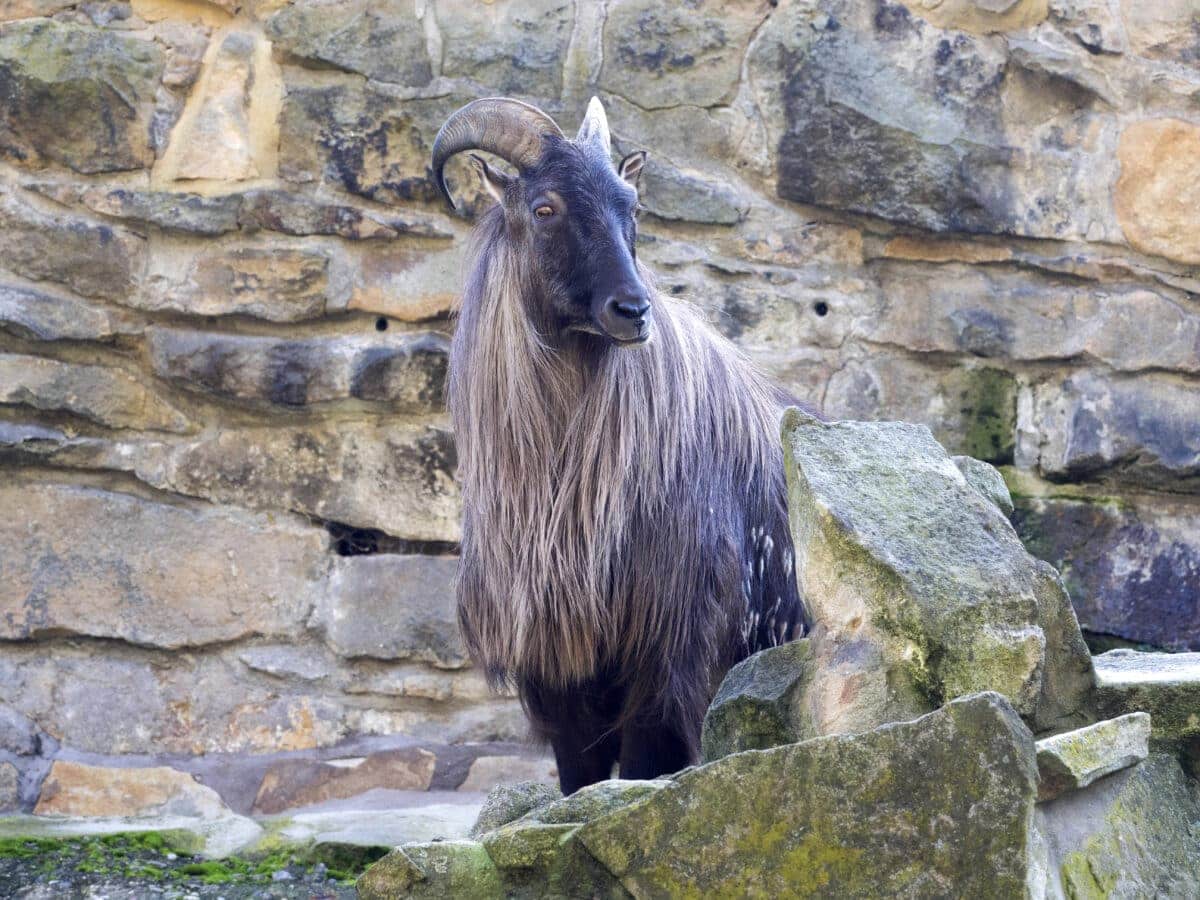
The Himalayan tahr (Hemitragus jemlahicus) is a wild goat that has mastered the art of living on nearly vertical cliff faces. With their stocky bodies covered in thick, woolly coats that grow longer in winter, these ungulates are built to withstand the harsh Himalayan climate. Adult males, known as bucks, can weigh up to 300 pounds and sport impressive manes that grow longer during the winter months, giving them a lion-like appearance. Their most remarkable adaptation is their specialized hooves, which feature soft rubbery cores surrounded by hard keratin edges – nature’s perfect design for gripping slippery rock surfaces.
Tahrs demonstrate extraordinary agility, capable of jumping up to 6 feet vertically and navigating slopes with inclines exceeding 45 degrees. They form herds organized by age and sex, with older males typically living solitarily until the breeding season. During the rut (November to January), males engage in dramatic displays and combat, rearing up on hind legs and crashing down with tremendous force against competitors. Females typically give birth to a single kid after a gestation period of about seven months, with births timed to coincide with the spring growth of vegetation. Although classified as near threatened, tahrs have successfully established invasive populations in New Zealand and South Africa, demonstrating their remarkable adaptability.
Red Panda: The Himalayan Fire Fox

Despite its name and appearance, the red panda (Ailurus fulgens) is not closely related to the giant panda but rather forms its own unique family, Ailuridae. This cat-sized mammal, with its rust-colored fur and raccoon-like facial markings, inhabits the temperate forests of the eastern Himalayas and southwestern China at elevations between 2,200 and 4,800 meters. Their dense fur, including fully furred soles on their feet, provides insulation against the cold, while their bushy tails serve dual purposes – as balance aids when climbing and as warm covers during sleep.
Red pandas are primarily bamboo specialists, with bamboo constituting up to 95% of their diet, supplemented by fruits, insects, and bird eggs when available. Unlike their digestive systems, which aren’t optimally designed for processing bamboo, forcing them to consume large quantities and spend up to 13 hours daily feeding. These primarily nocturnal animals are exceptional climbers, using their semi-retractable claws and wrist bones that act somewhat like thumbs. With fewer than 10,000 individuals remaining in the wild, red pandas are classified as endangered due to habitat loss, poaching, and fragmentation of their populations. Their adorable appearance has made them popular in zoos worldwide, helping to raise awareness about conservation efforts in the Himalayan region.
Himalayan Musk Deer: The Vampire Deer
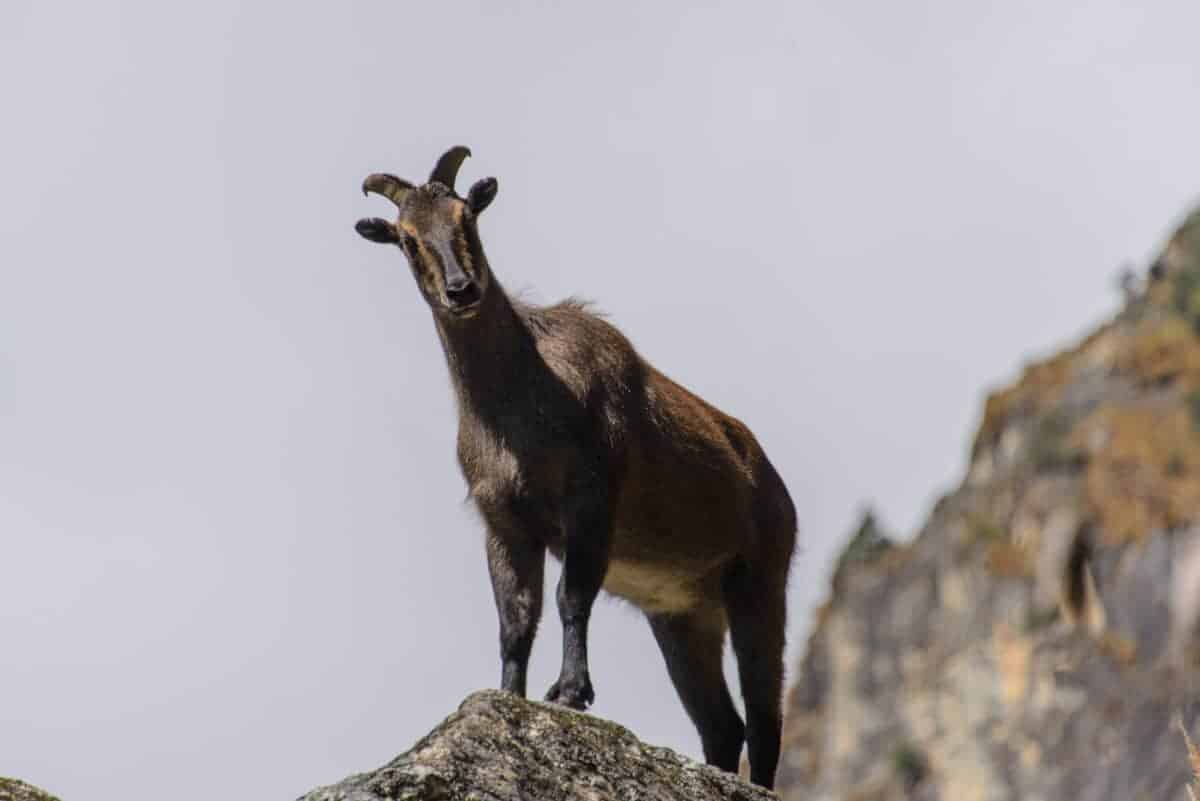
The Himalayan musk deer (Moschus leucogaster) is one of the most peculiar and valuable mammals in the Himalayan region. Unlike true deer, musk deer lack antlers – but what males lack in headgear, they make up for with prominent tusks (enlarged canine teeth) that can grow up to 10 cm long, protruding downward from their upper jaws. These fangs, which have earned them the nickname “vampire deer,” are used primarily for territorial fights with rival males and securing mates. Standing only about 60 cm tall at the shoulder, these small deer-like animals have distinctive thick, coarse fur that provides excellent insulation.
What makes musk deer particularly notable is their eponymous musk – a waxy substance produced in a gland of adult males that has been highly valued in traditional medicine and perfumery for centuries. A single gland can fetch up to $45,000 on the black market, making these shy, solitary animals targets for intensive poaching. This exploitation, combined with habitat loss, has led to their endangered status, with populations declining by more than 50% in recent decades. Musk deer typically inhabit dense alpine forests at elevations between 2,500 and 4,000 meters, where they browse on lichens, flowers, twigs, and moss. Their specialized physiology allows them to move with remarkable agility through steep, rocky terrain, using a distinctive bouncing gait that enables quick escapes from predators.
Himalayan Blue Sheep (Bharal): The Nimble Mountaineers

Neither true sheep nor true goats, the Himalayan blue sheep or bharal (Pseudois nayaur) occupies a unique taxonomic position and an equally specialized ecological niche in the high Himalayas. These agile ungulates inhabit open grassy slopes at elevations ranging from 3,000 to 5,000 meters. Despite their name, bharal aren’t actually blue – their coat is more of a grayish brown with a bluish sheen that provides excellent camouflage against the rocky landscape. Males develop impressive curved horns that can reach over 80 cm in length, sweeping outward and then backward in a distinctive pattern.
As the primary prey species for snow leopards, bharal have evolved remarkable defensive adaptations. They possess exceptional vision, capable of detecting movement up to a kilometer away, and can flee uphill at speeds of up to 50 km/h – a strategy that tires most predators quickly in the oxygen-thin high-altitude environment. Their specialized hooves feature rubber-like pads surrounded by hard keratin rims, providing superior grip on steep, rocky surfaces. Bharal live in herds that can number from 5 to 400 individuals, with composition shifting seasonally. During winter, they descend to lower elevations and more sheltered areas, while summer finds them grazing on high alpine meadows above the treeline. Unlike many mountain ungulates, bharal populations remain relatively stable at around 47,000-60,000 individuals, though they face increasing pressure from habitat loss and competition with domestic livestock.
Himalayan Tahr: Masters of Vertical Terrain

The Himalayan monal (Lophophorus impejanus), often called the “rainbow bird of the Himalayas,” is arguably the most spectacularly colored bird in the region. As Nepal’s national bird, this pheasant species showcases an iridescent plumage that shifts between metallic green, coppery red, purple, and blue depending on how light strikes its feathers. Males sport a distinctive crest of spoon-shaped feathers and can weigh up to 2.5 kg, while females are slightly smaller and wear more subdued brown plumage that provides excellent camouflage while nesting. Their stout, curved bills are specially adapted for digging, allowing them to forage efficiently for roots, tubers, seeds, berries, and insects in the rocky soil.
Monals inhabit coniferous forests, alpine meadows, and scrublands at elevations ranging from 2,100 to 4,500 meters, migrating vertically with the seasons – moving to lower elevations during harsh winters and ascending to alpine meadows in summer. During courtship displays, male monals perform elaborate rituals, spreading their iridescent feathers in fan-like displays while producing loud, whistling calls that echo through the mountains. Despite their protected status in most range countries, monals face threats from habitat degradation and hunting for their spectacular feathers, which are used in traditional headgear in some Himalayan cultures. Their adaptation to cold environments is remarkable – they possess specialized air sacs beneath their skin that provide additional insulation against the frigid mountain temperatures.
Himalayan Black Bear: The White-Chested Omnivore
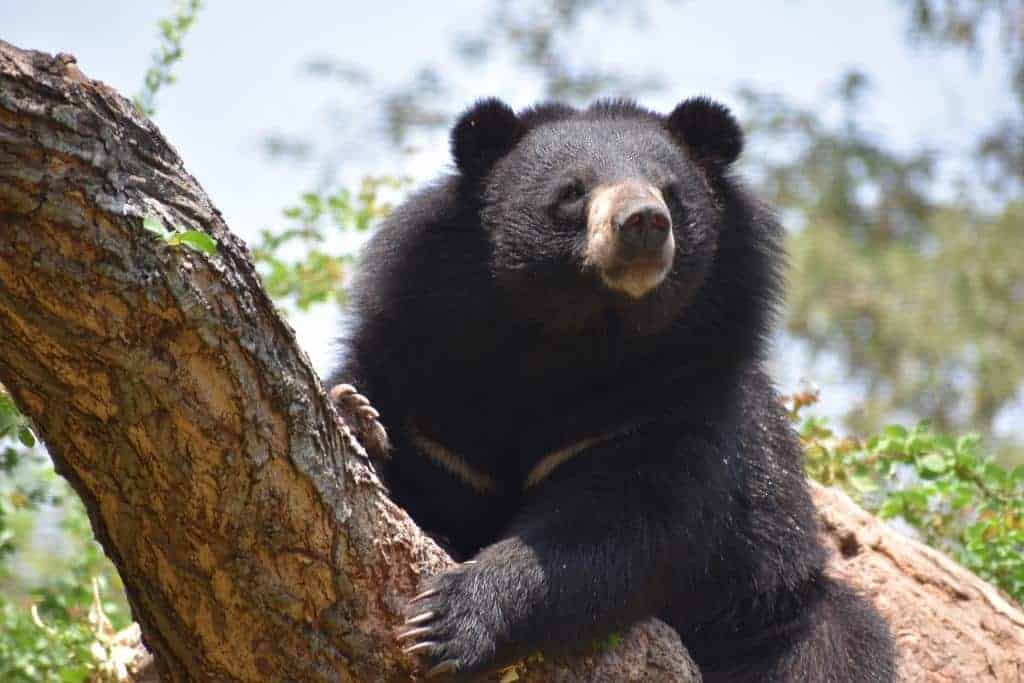
Himalayan Black bear, Image via Unsplash
The Himalayan black bear (Ursus thibetanus laniger), a subspecies of the Asian black bear, is distinguished by its glossy black coat and distinctive white V-shaped chest marking. With adult males weighing up to 200 kg, these powerful omnivores possess several adaptations for their mountainous habitat, including strong, curved claws ideal for climbing trees and digging for food. Their shaggy coat grows especially thick during winter months, providing crucial insulation against the cold. Unlike some bear species, Himalayan black bears don’t truly hibernate but enter a period of dormancy during the harshest winter months, taking shelter in caves, hollow trees, or rock crevices.
Highly adaptable feeders, these bears consume a remarkably diverse diet that shifts seasonally. In spring, they primarily eat bamboo shoots, herbs, and insects; summer brings fruits and berries; while autumn finds them gorging on nuts, acorns, and other high-calorie foods to build fat reserves for winter. Himalayan black bears demonstrate remarkable intelligence and dexterity, using their semi-opposable thumbs to manipulate objects with surprising precision. Unfortunately, increasing human encroachment into their habitat has led to more frequent human-bear conflicts. These bears have been known to raid crops and occasionally attack livestock, leading to retaliatory killings. Conservation efforts focus on reducing these conflicts through better waste management practices and educational programs for communities living near bear habitats.
Himalayan Griffon Vulture: The Sky Custodian

With a wingspan that can exceed 3 meters (10 feet), the Himalayan griffon vulture (Gyps himalayensis) is one of the largest flying birds in Asia and a critical component of the Himalayan ecosystem. These massive scavengers inhabit open areas at elevations ranging from 1,200 to 5,500 meters, nesting on steep cliffs and rocky outcrops that provide protection from predators. Their naked heads and necks – adaptations for hygiene when feeding on carcasses – contrast sharply with their pale brown body plumage and dark flight feathers. Unlike many birds, Himalayan griffons have specialized stomach acid with an exceptionally low pH (around 1), allowing them to digest carrion safely and neutralize potentially harmful bacteria.
These vultures play a vital ecological role as nature’s cleanup crew, capable of stripping a large mammal carcass to bone within hours. Their remarkable soaring ability allows them to cover vast territories with minimal energy expenditure, riding thermal updrafts to reach altitudes over 8,000 meters – higher than most commercial aircraft fly. Himalayan griffons have evolved specialized hemoglobin that binds oxygen more efficiently than most birds, enabling them to function in the oxygen-poor environment of high altitudes. Despite their importance, these vultures face threats from habitat loss, food scarcity due to changing livestock management practices, and accidental poisoning. Their slow reproductive rate – laying just one egg per year and taking 4-5 years to reach sexual maturity – makes population recovery particularly challenging.
Himalayan Pika: The Tiny Haymakers
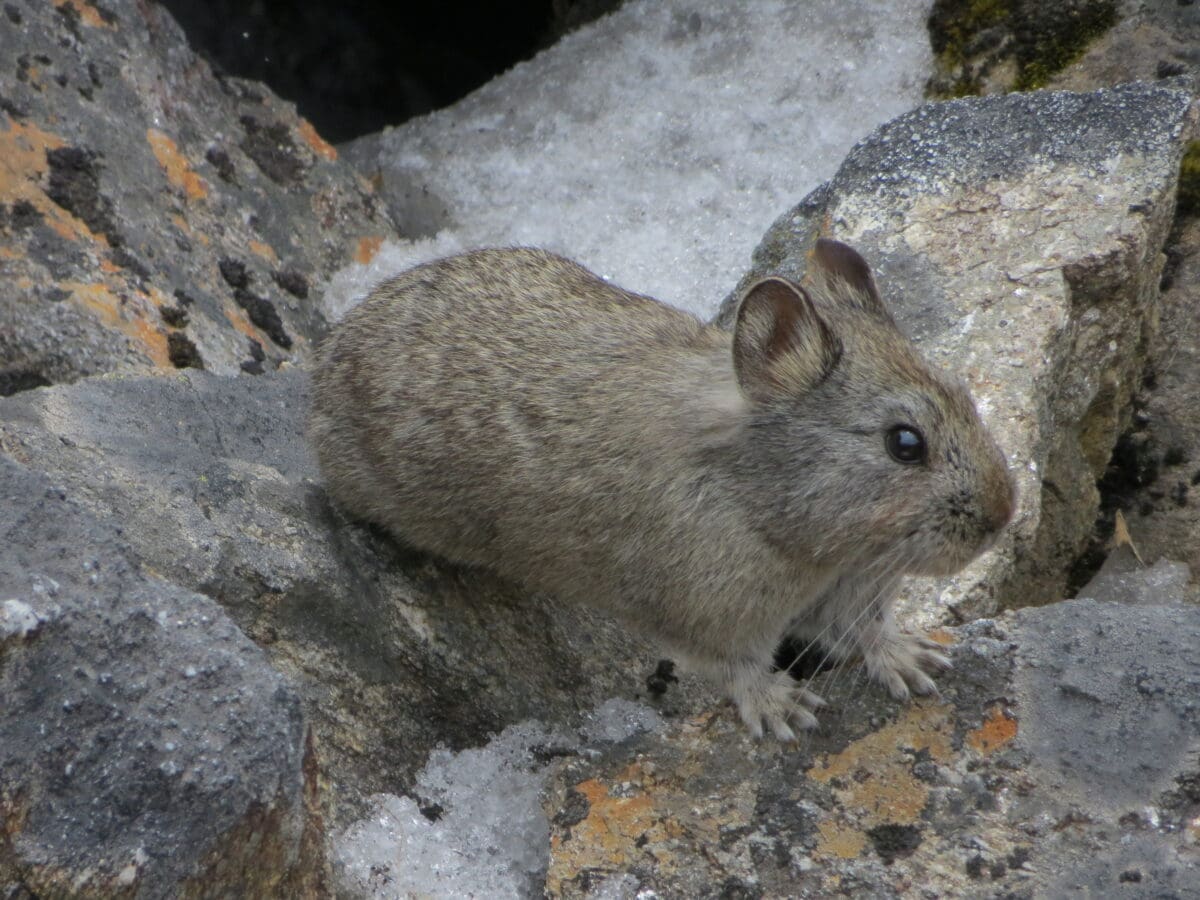
Often overlooked due to their small size, Himalayan pikas (Ochotona himalayana) are among the most well-adapted mammals in the high-altitude regions of the Himalayas. These rabbit relatives, measuring just 15-20 cm in length and weighing around 150 grams, inhabit rocky slopes and meadows at elevations between 2,500 and 5,000 meters. Their compact, rounded bodies minimize heat loss, while their thick fur and reduced ear size (compared to rabbits) serve as adaptations to the cold climate. Pikas lack the long tails typical of many mammals – another adaptation that reduces heat loss through reduced surface area.
What makes pikas particularly fascinating is their hay-making behavior. During summer months, these industrious animals harvest and sun-dry grasses and flowering plants, carefully stacking them in “haypiles” under rocks to create food caches for the harsh winter. A single pika can collect up to 5 kg of vegetation during the growing season – many times its own body weight. Unlike many high-altitude mammals, pikas don’t hibernate, remaining active year-round beneath the snow layer, where temperatures remain relatively stable compared to the extreme cold above. They communicate through a system of high-pitched calls that serve as territorial markers and warning signals against predators like weasels, foxes, and large birds of prey. As climate-sensitive species with precise temperature requirements, pikas are increasingly studied as indicator species for monitoring climate change impacts in mountain ecosystems.
Himalayan Tahr: Agile Mountain Specialists

The Himalayan brown bear (Ursus arctos isabellinus), a subspecies of the brown bear, represents one of the apex predators of the Himalayan ecosystem. These magnificent mammals, standing up to 2.2 meters tall when on hind legs and weighing up to 350 kg, possess enormous physical strength combined with remarkable adaptability. Their thick, shaggy coat varies from light brown to reddish-gold, providing excellent insulation during the harsh mountain winters. Unlike the Himalayan black bear, brown bears have a pronounced shoulder hump – a mass of muscle that powers their incredible digging ability, allowing them to excavate roots and small mammals from the ground with remarkable efficiency.
Primarily omnivorous, these bears consume a varied diet that includes grasses, roots, fruits, nuts, insects, small mammals, and occasionally larger prey. Their seasonal activities follow a distinct pattern – emerging from winter dormancy in spring to feed on fresh vegetation, gradually incorporating more protein and fat-rich foods as summer progresses, and then entering a period of hyperphagia (excessive eating) in autumn to build fat reserves for winter. During winter, they enter a state of dormancy in dens excavated into hillsides or under large rocks, though this isn’t true hibernation as their body temperature remains relatively stable. Unfortunately, the Himalayan brown bear population has declined dramatically due to habitat fragmentation, human conflict, and poaching for their gall bladders, which are valued in traditional medicine. Current estimates suggest fewer than 1,000 individuals remain across their range, making conservation efforts increasingly urgent.
Tibetan Wolf: The High-Altitude Hunter
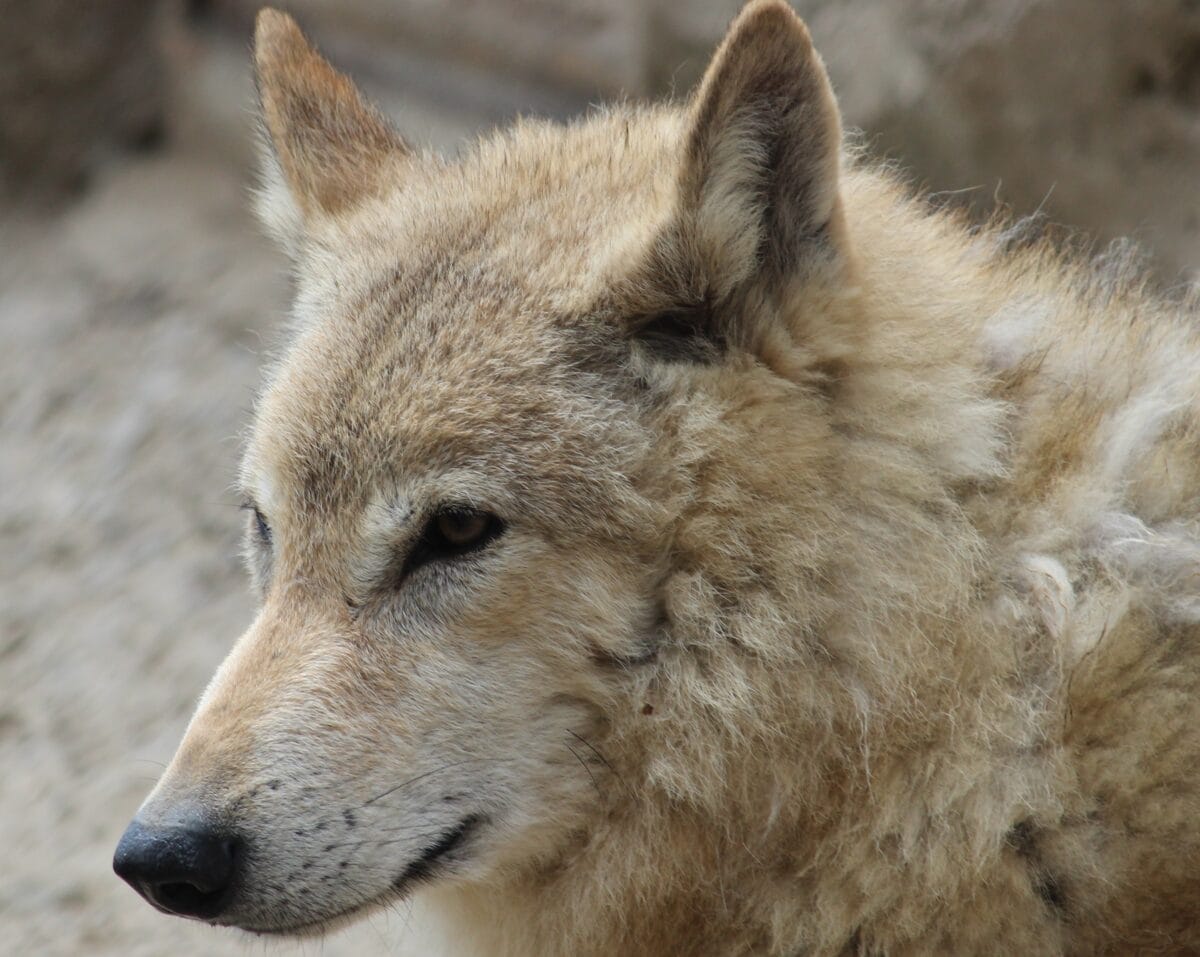
The Tibetan wolf (Canis lupus chanco), sometimes called the Himalayan wolf, represents a genetically distinct wolf population adapted specifically to the high-altitude environments of the Himalayan region. Smaller than their North American counterparts, Tibetan wolves typically weigh between 30-35 kg and stand about 76 cm at the shoulder. Their thick, woolly coat appears paler than other wolf subspecies, ranging from light gray to creamy white, providing both camouflage in snowy landscapes and insulation against extreme cold. Their compact bodies, broad paws, and enlarged heart and lungs represent evolutionary adaptations that allow them to move efficiently through snow
- The Best US National Parks for Spring Wildlife Watching - August 24, 2025
- Why Bears Play—and What It Teaches Us - August 24, 2025
- 12 Dog Breeds That Can Survive a Coyote Attack - August 24, 2025

